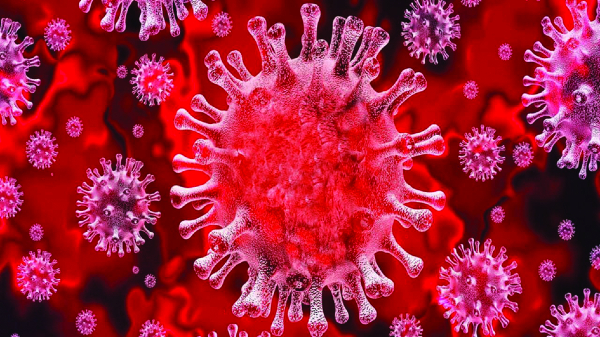Compulsory Vaccination May Be Coming— But Should We Comply?
By Anthony Jay, Ph.D.
A Catholic Ph.D. Scientist and Researcher at the World-Renowned Mayo Clinic in Rochester, Minnesota, Explains Why the Risks of a Rapidly Deployed COVID Vaccine Program May Well Outweigh the Benefits
In a 3-page paper issued on July 30, two of England’s Catholic bishops wrote, “The Catholic Church strongly supports vaccination and regards Catholics as having a prima facie duty to be vaccinated, not only for the sake of their own health but also out of solidarity with others, especially the most vulnerable.” A number of other Catholic bishops around the world have similarly told their flocks that accepting a COVID-19 vaccine, should one come to market, may be their Christian duty “for the common good.” But prior questions must be answered before any talk of “the common good” can begin: Is it indisputably safe? If we do not know what the risks are, how can we accept them for ourselves and for our children? And what is wrong with a pharmaceutical industry — and scientific community — that is unable to provide credible proof of safety, perhaps despite claims to the contrary?
 Catholic scientist Anthony Jay, Ph.D., has been a researcher at the world-renowned Mayo Clinic in Rochester, Minnesota, for the past three years. Dr. Jay, an alumnus of Ave Maria University with a double major in biology and theology, explains why the risks of a rapidly-deployed COVID vaccine program may outweigh the benefits.
Catholic scientist Anthony Jay, Ph.D., has been a researcher at the world-renowned Mayo Clinic in Rochester, Minnesota, for the past three years. Dr. Jay, an alumnus of Ave Maria University with a double major in biology and theology, explains why the risks of a rapidly-deployed COVID vaccine program may outweigh the benefits.
I am a scientist and veteran of the Mayo Clinic, and if a COVID vaccine is successfully launched, I won’t be in line to get it.
To understand why, let’s start with a serious issue influencing modern American politics and therefore, downstream, American science: money. A scientist friend of mine, Dr. Michael Skinner, raises 3,000 to 5,000 mice at any given time. He tests various chemicals on these mice and he studies their long-term health impacts. Dr. Skinner makes numerous sobering discoveries because most toxicity studies only focus on toxicity effects over the course of a few days.
Regarding one commonly used fungicide, Dr. Skinner gave a scientific presentation in Europe. This particular chemical causes substantial health problems affecting multiple generations. The impacts take a long time to observe, but they are real. And, again, the health issues extend beyond just the animals being exposed, but also to future generations.
Dr. Skinner has found adverse effects out to 4 generations, therefore implicating “epigenetics,” which are marks on the DNA that are changed and passed on to future generations. After Dr. Skinner’s talk, Europe banned that fungicide two weeks later. The European ban continues to this day. In America, this fungicide chemical is still legal and commonly used. Dr. Skinner’s talk was given over five years ago. Europe has far less monetary influence in its political system. People making that chemical weren’t involved behind the scenes, swaying the politicians.
 It reminds me of diethylstilbestrol (DES), a synthetic estrogen given to millions of pregnant women between 1940-1971. It was also used to chemically castrate select men; for example, the famous mathematician Alan Turing. Was DES a black-market steroid? No. DES was prescribed and touted by numerous professional medical doctors and researchers. DES had adverse effects, but that’s normal for drugs that are artificially synthesized and slightly different from anything found in nature. Prescription drugs follow this same pattern of mimicking something found in nature — in the case of DES, natural estrogen — yet they are not something we truly find in nature. What was most concerning about DES was the long-term and even lifelong effects in future generations that it caused. Researchers learned this the hard way, and I personally know a number of “DES survivors.” The influence of money, but also the lack of long-term studies, kept this harmful drug on prescription pads for far too long.
It reminds me of diethylstilbestrol (DES), a synthetic estrogen given to millions of pregnant women between 1940-1971. It was also used to chemically castrate select men; for example, the famous mathematician Alan Turing. Was DES a black-market steroid? No. DES was prescribed and touted by numerous professional medical doctors and researchers. DES had adverse effects, but that’s normal for drugs that are artificially synthesized and slightly different from anything found in nature. Prescription drugs follow this same pattern of mimicking something found in nature — in the case of DES, natural estrogen — yet they are not something we truly find in nature. What was most concerning about DES was the long-term and even lifelong effects in future generations that it caused. Researchers learned this the hard way, and I personally know a number of “DES survivors.” The influence of money, but also the lack of long-term studies, kept this harmful drug on prescription pads for far too long.
Am I just jaded? Maybe. I’ve had a peek at the Wizard of Oz behind the curtain. Most people haven’t seen behind the research scenes because they’re not professional scientists. Yet, it’s not just me. Once I had lunch with a corporate pharmaceutical CEO. He explained that before re-creating and studying any costly drug discovered and published in peer-reviewed scientific studies, his company tries to exactly replicate that study. They fail about 70% of the time.
Another insider, Dr. Marcia Angell, penned this eerie statement, written well before COVID-mania: “It is simply no longer possible to believe much of the clinical research that is published, or to rely on the judgment of trusted physicians or authoritative medical guidelines. I take no pleasure in this conclusion, which I reached slowly and reluctantly over my two decades as an editor of the New England Journal of Medicine.” [Emphasis mine]
How did Dr. Angell come to the extreme conclusion that it is no longer possible to believe much of the clinical research? She was further behind that Oz curtain. She was the 20-year chief editor of the world’s most prestigious medical journal.
What are some of the things Dr. Angell was seeing? Manipulation of the system, for one.
In the past 12 months or so, I’ve published about five scientific papers in peer-reviewed research journals. And there’s one thing most people don’t realize about this: when scientists like myself submit these papers, we select our peer-reviewers. We literally inform the journal of three people that we prefer to peer-review our paper to determine whether the paper should be published.
Also, when I submit these papers, nobody removes my name from the top of the paper, so there is no anonymity. Sound like a recipe for unadulterated facts?
It gets worse. If you don’t publish, you perish. When you are an active scientific researcher in America, publications-per-year are the main “currency” for succeeding in grant-funding awards. This strongly incentivizes researchers to have their buddies favorably peer-review their studies and fast-track short-term studies. The studies may overlook many fairly obvious things, but time is always at a premium and “publish or perish” rules the day. The most meticulous lose their grant funding and therefore their research careers. It’s survival of the quickest, often even the sloppiest, maybe the most politically-connected with other scientists — definitely not the fittest.
“If You Have Adverse Effects From a Vaccine, You Can’t Sue the Vaccine Corporation. They Have a Special ‘Vaccine Court’ Funded by the US Government That Handles These Lawsuits, If They Ever See the Light of Day.”
What is being studied? Another well-known scientist, Dr. Marion Nestle, has a hobby of finding and reporting on studies that have been directly funded by corporations. Of 168 studies Dr. Nestle has collected, 156 were “favorable” toward company products. I wonder how that could possibly have happened? Relevant to our times, COVID vaccine studies would be an example of studies funded by corporations, although companies generally don’t peer-review their research because they pay the FDA to do it. In addition, if you have adverse effects from a vaccine, you can’t sue the vaccine corporation. They have a special “vaccine court” funded by the US government that handles these lawsuits, if they ever see the light of day.
I have personal experience in this area. My own dad got a flu shot and a few days later, had to be airlifted to a Twin Cities hospital because his nervous system was giving out. He was bedridden for about 10 years and still suffers from POTS. This is a condition in which, essentially, his brain doesn’t communicate effectively with his heart to monitor its rate. Was there a lawsuit? No. It’s almost impossible to prove the vaccine did anything directly.
On August 13, 2020, comedian Ron Funches was a guest on one of the most successful podcasts in the country, the Joe Rogan Experience. When asked if he was in line to get a COVID vaccine if one comes out, Funches relayed this story: “I just remember the day that we got my son his first vaccinations and he had been developing normally, and had just been chill, and had been talking, and all the things pretty normally. And then we got him the vaccine and me and my ex-wife, we just remember, he was just kinda like out-of-it. Because me and my ex-wife were big potheads, we were both like ‘Oh! Look how stoned he looks… he looks so stoned and he’s out-of-it,’ but he (…) never came back! And so that was the moment where I was like, I don’t know if it causes it or what, but that’s the story I can tell.” [emphasis mine]
Ron Funches’ son is 17 today, and has severe autism. No lawsuits were filed and probably no documentation linking that vaccination with autism. Good thing we have peer-reviewed studies on the topic so we know the “truth,” right?
Circling back to COVID vaccines, it’s a moving target, so a very challenging one, but we’ve actually made previous attempts to create these specific vaccines in past years. Researchers from the Department of Immunology at The University of Texas Medical Branch published this paper in 2012: “Immunization with SARS coronavirus vaccines leads to pulmonary immunopathology on challenge with the SARS virus” [emphasis mine].
The headline is alarming when you realize that “on challenge” means “on par.”
In other words, the vaccine caused lung damage on par with the actual virus.
The vaccine they created and tested in mice was successful in that it induced antibody protection against SARS-CoV. However, in many mice, the vaccine itself caused more lung damage than simply getting the SARS-CoV infection!

And when they give these animals the virus infection, they hit them hard. It’s not like a few virus particles you breathe in at a supermarket and then you develop some immunity without severe lung damage from the virus. They have a “0-to-60” approach. So the fact that the vaccine was as damaging as extreme SARS-CoV infection is alarming indeed. Here is a relevant quote, directly from that study: “Clinical trials with SARS coronavirus vaccines have been conducted and reported to induce antibody response and to be ‘safe.’ However, the evidence for safety is for a short period of observation.”
This particular study was actually conducted over a longer period of time than many, and the results speak for themselves.
Why don’t we currently have a SARS or COVID vaccine already? Because they often cause lung damage. As a healthy individual with a healthy family, I don’t want an unnatural substance injected into my or my children’s bodies, especially if that substance offers a high risk of causing lung damage. Should I be forced to get that vaccine? That’s even worse. It’s like punishing me for eating healthy, exercising daily, not owning a TV, prioritizing good sleep, and meditating daily.
A New Research Article… Was Interestingly Titled “Vitamin D3 And K2 and Their Potential Contribution to Reducing the COVID-19 Mortality Rate”
What about COVID infection? According to the National Institute of Health in Italy, a country among those hit hardest by COVID, over 99% of COVID patients who died had at least one preexisting condition. Preexisting conditions are common in America, particularly Type 2 diabetes, so a vaccine may make sense for many people. But it is also possible a COVID vaccine may cause worse lung damage, arising from the vaccine itself, in people with preexisting conditions than in people without preexisting conditions. This is especially true if a vaccine is rushed to market and only tested on robust, healthy young people.

Most chronic health conditions in America are caused by processed food, lack of exercise, poor sleep, stress, and lack of social connections. (Yes, social connections are critically important for optimal health.) Vitamin D is also critically important. A new research article from the International Journal of Infection Diseases was interestingly titled “Vitamin D3 and K2 and their potential contribution to reducing the COVID-19 mortality rate.” This article mentions a recent clinical study from Iran with over 600 patients. It revealed that there were no COVID deaths if serum vitamin D3 concentrations were higher than 41 ng/mL. The average American has about 30 ng/mL, so we need to get our act together — but at least sunshine is natural; we don’t have to buy it in a bottle!
 Furthermore, studies on hunter-gatherer tribes show that everyone in those tribes has vitamin D3 levels between 70 – 100 ng/mL, so we have some insight into a more natural human state. Jesus walked to Emmaus from Jerusalem, about 7 miles — he didn’t drive. People historically have been exposed to sunshine. So, regarding vitamin D, I think we can do better as a culture. But I don’t advocate forcing anybody to take vitamin D supplements or forcing anyone to go out in the sunshine, despite these things clearly being natural or “found in nature.”
Furthermore, studies on hunter-gatherer tribes show that everyone in those tribes has vitamin D3 levels between 70 – 100 ng/mL, so we have some insight into a more natural human state. Jesus walked to Emmaus from Jerusalem, about 7 miles — he didn’t drive. People historically have been exposed to sunshine. So, regarding vitamin D, I think we can do better as a culture. But I don’t advocate forcing anybody to take vitamin D supplements or forcing anyone to go out in the sunshine, despite these things clearly being natural or “found in nature.”
With that in mind, what do you think my stance is on compulsory vaccines, which are artificially constructed?
ANTHONY G. JAY, PH.D., is the president and CEO of AJ Consulting Company. Dr. Jay earned a B.A. with a double major in Biology and Theology from Ave Maria University in Naples, Florida, and a Ph.D. in Biochemistry from Boston University School of Medicine. He has been a researcher at the Mayo Clinic in Rochester, Minnesota, for the past 3 years, researching stem cells and epigenetics. He is the bestselling author of Estrogeneration: How Estrogenics are Making You Fat, Sick and Infertile.







Facebook Comments